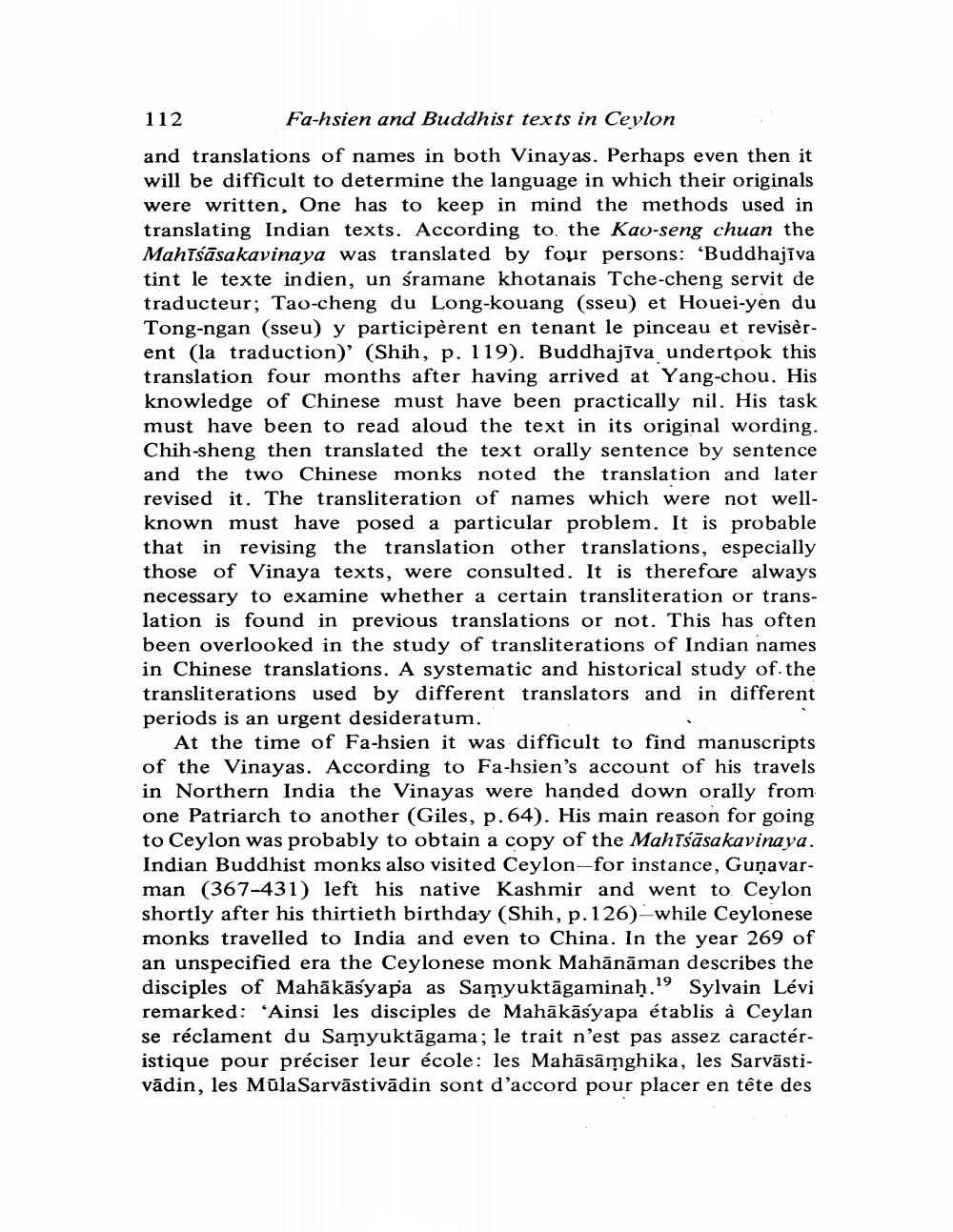________________ 112 Fa-hsien and Buddhist texts in Ceylon and translations of names in both Vinayas. Perhaps even then it will be difficult to determine the language in which their originals were written, One has to keep in mind the methods used in translating Indian texts. According to, the Kao-seng chuan the Mahisasakavinaya was translated by four persons: Buddhajiva tint le texte indien, un sramane khotanais Tche-cheng servit de traducteur; Tao-cheng du Long-kouang (sseu) et Houei-yen du Tong-ngan (sseu) y participerent en tenant le pinceau et reviserent (la traduction)' (Shih, p. 119). Buddhajiva undertook this translation four months after having arrived at Yang-chou. His knowledge of Chinese must have been practically nil. His task must have been to read aloud the text in its original wording. Chih-sheng then translated the text orally sentence by sentence and the two Chinese monks noted the translation and later revised it. The transliteration of names which were not wellknown must have posed a particular problem. It is probable that in revising the translation other translations, especially those of Vinaya texts, were consulted. It is therefore always necessary to examine whether a certain transliteration or translation is found in previous translations or not. This has often been overlooked in the study of transliterations of Indian names in Chinese translations. A systematic and historical study of the transliterations used by different translators and in different periods is an urgent desideratum. At the time of Fa-hsien it was difficult to find manuscripts of the Vinayas. According to Fa-hsien's account of his travels in Northern India the Vinayas were handed down orally from one Patriarch to another (Giles, p.64). His main reason for going to Ceylon was probably to obtain a copy of the Mahisasakavinaya. Indian Buddhist monks also visited Ceylon-for instance, Gunavarman (367-431) left his native Kashmir and went to. Ceylon shortly after his thirtieth birthday (Shih, p.126)-while Ceylonese monks travelled to India and even to China. In the year 269 of an unspecified era the Ceylonese monk Mahanaman describes the disciples of Mahakasyapa as Samyuktagaminah.19 Sylvain Levi remarked: 'Ainsi les disciples de Mahakasyapa etablis a Ceylan se reclament du Samyuktagama; le trait n'est pas assez caracteristique pour preciser leur ecole: les Mahasamghika, les Sarvastivadin, les MulaSarvastivadin sont d'accord pour placer en tete des




